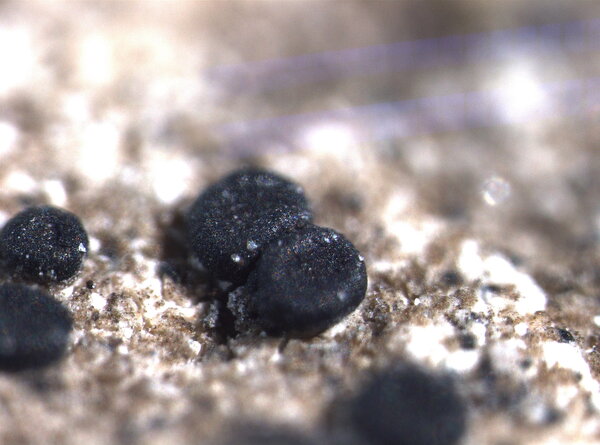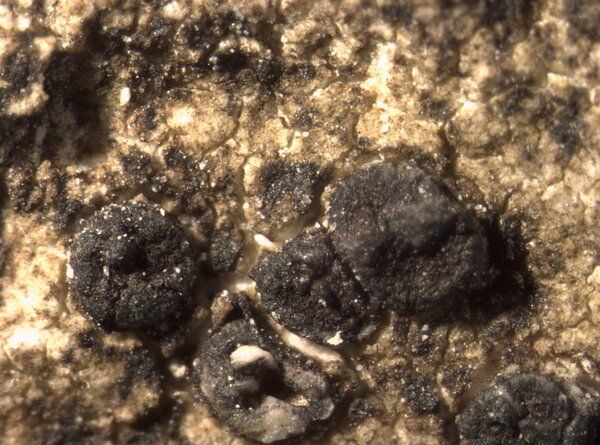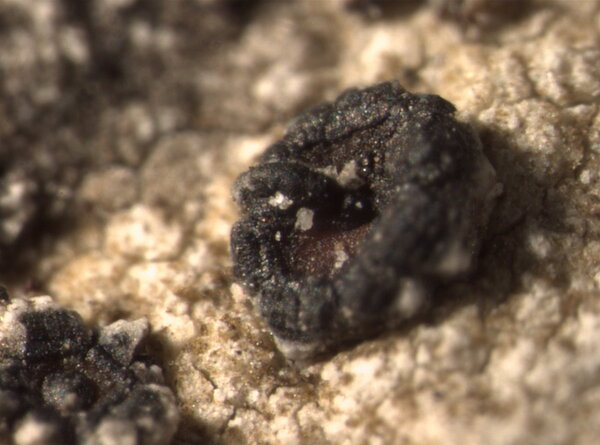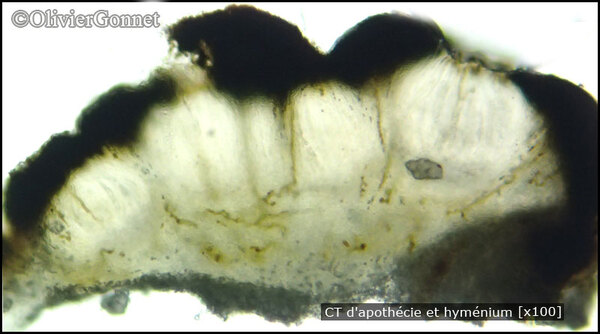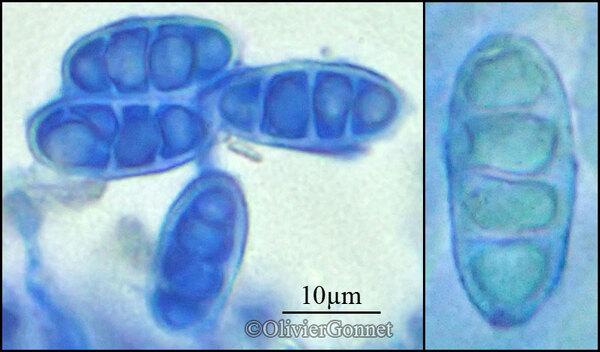Sagiolechia protuberans (Ach.) A. Massal.
Geneac. Lich.: 11, 1854. Basionym: Sagedia protuberans Ach. - Lichenogr. Univ.: 328, 1810.
Synonyms: Bilimbia protuberans (Ach.) A. Massal.; Gyalecta cimbrica (A. Massal.) Jatta; Gyalecta protuberans (Ach.) Anzi; Gyalecta protuberans var. mamillata (Hepp) Anzi; Lecidea protuberans (Ach.) Schaer.; Sagiolechia cimbrica A. Massal.; Sagiolechia leioplacoides (Vain.) Vain.; Verrucaria leioplacoides Vain.
Distribution: N - Frl, Ven (Lazzarin 2000b), TAA (Nascimbene 2008b, Nascimbene & al. 2022), Lomb, VA (Piervittori & Isocrono 1999), Emil (Fariselli & al. 2020). C - Marc (Nimis & Tretiach 1999), Umb (Genovesi & Ravera 2001, Ravera & al. 2006), Sar. S - Camp (Aprile & al. 2003b), Cal (Puntillo 1996).
Description: Thallus crustose, endosubstratic, continuous, wine-red when sterile, whitish, pinkish or pinkish brown when fertile. Apothecia (0.4-)0.5-0.7(-1) mm across, frequently arranged in lines or in clusters, at first largely immersed in the thallus, then sessile, black (the disc turning red-brown when wet), with an initially concave, then flat to convex, often umbonate to gyrose disc, and a thick, radially split and sometimes finally star-shaped proper margin. Proper exciple black and carbonized in outer part, colourless to yellowish brown within; epithecium reddish brown to dark brown, K-; upper part of umbo brown-black to black; hymenium colourless, 95-120 µm high, the hymenial gel I+ blue; paraphyses branched and anastomosing, c. 1 µm thick in lower part, the apical cells swollen, up to 4 µm wide; hypothecium colourless to dark brown. Asci 8-spored, cylindrical to elongate-clavate, the wall K/I+ blue, the apical dome K/I-, Gomphillus-type. Ascospores (2-)3-septate, hyaline, ellipsoid to fusiform, 12-25(-30) x 6.5-9.5(-12) µm. Pycnidia black, immersed, the conidiogenous cells short, bottle-shaped, enteroblastic. Conidia acrogenous hyaline, bacilliform. Photobiont trentepohlioid. Spot tests: thallus K-, C-, KC-, P-, UV-. Chemistry: without lichen substances.Note: on dolomite and hard calciferous rocks in rather humid situations; probably more widespread, and locally even common, along the Apennines.
Growth form: Crustose
Substrata: rocks
Photobiont: Trentepohlia
Reproductive strategy: mainly sexual
Commonnes-rarity: (info)
Alpine belt: extremely rare
Subalpine belt: extremely rare
Oromediterranean belt: very rare
Montane belt: extremely rare
Submediterranean belt: absent
Padanian area: absent
Humid submediterranean belt: extremely rare
Humid mediterranean belt: absent
Dry mediterranean belt: absent

Predictive model
Herbarium samples
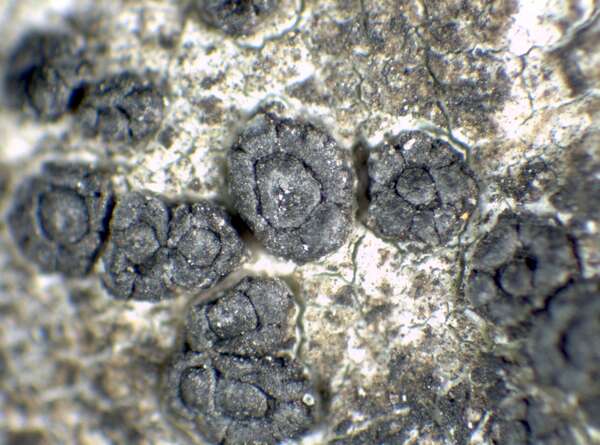

P.L. Nimis; Owner: Department of Life Sciences, University of Trieste
Herbarium: TSB (23717)
2001/12/18
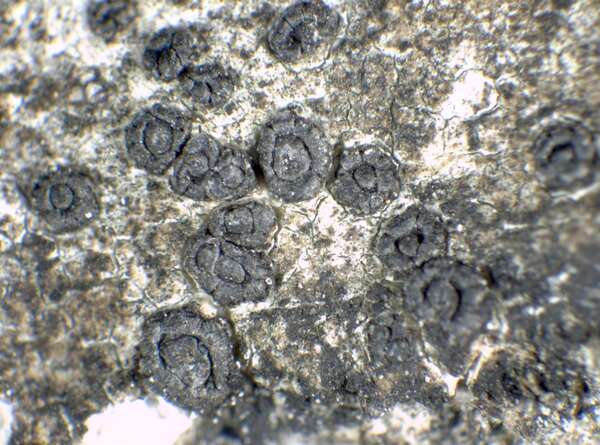

P.L. Nimis; Owner: Department of Life Sciences, University of Trieste
Herbarium: TSB (23717)
2001/12/18
Growth form: Crustose
Substrata: rocks
Photobiont: Trentepohlia
Reproductive strategy: mainly sexual
Commonnes-rarity: (info)
Alpine belt: extremely rare
Subalpine belt: extremely rare
Oromediterranean belt: very rare
Montane belt: extremely rare
Submediterranean belt: absent
Padanian area: absent
Humid submediterranean belt: extremely rare
Humid mediterranean belt: absent
Dry mediterranean belt: absent

Predictive model
| Herbarium samples |


P.L. Nimis; Owner: Department of Life Sciences, University of Trieste
Herbarium: TSB (23717)
2001/12/18


 Index Fungorum
Index Fungorum
 GBIF
GBIF
